TOP 10 of the Most Beautiful Cities in Italy and Sicily
Italy has some of the most spectacular old cities in the world.
If you want to go beyond the usual tourist routes and see them in a whole new light, have a look at some of our tours lead by passionate, expert guides.
It’s not just the countryside that’s beautiful in Italy – so are many of the cities! Not only are they stunning, Italy’s cities are incredibly fascinating, full of art, history, ancient ruins, meals and more.
Although it was hard for us to keep it to only 10, here are 10 of the most beautiful –and interesting!– cities in Italy. Trust us: a visit to any one of them will be a life changing experience!
Verona
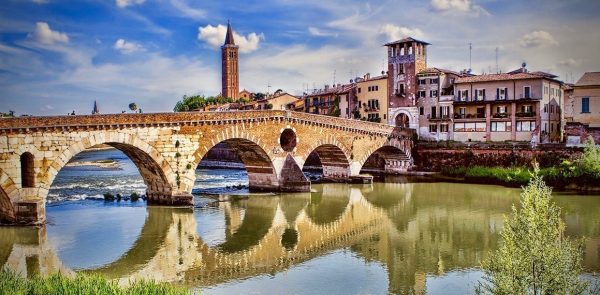
Verona isn’t just where William Shakespeare set Romeo and Juliet—it’s also a beautiful city that offers a lot to do and see! From ancient Roman ruins –including an incredibly well-preserved Arena– to a medieval castle, from stunning piazzas to historic churches, Verona is bursting with sightseeing opportunities. And, oh yes, it’s one of the most beautiful cities in Italy… and every bit as romantic as you’d expect!
Venice
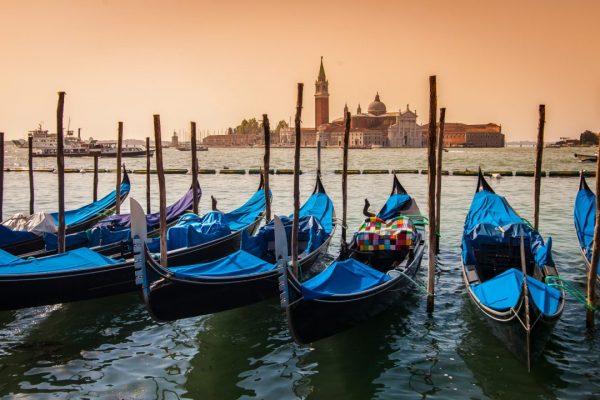
Gondolas on canals in Venice
What makes Venice one of the most beautiful cities in the world? Let us count the ways… There’s Venice’s unique, lovely architecture, its beautiful churches, and, of course, the show-stopping St. Mark’s Square. But what really makes Venice beautiful is the fact that it’s built entirely on canals – so there’s no traffic or bus exhaust, and along many canals, all you can hear is the lapping of the water! To make the most of Venice’s tranquil side, consider going in autumn or even in the winter, when a lovely mist hangs over the entire city.
Bologna
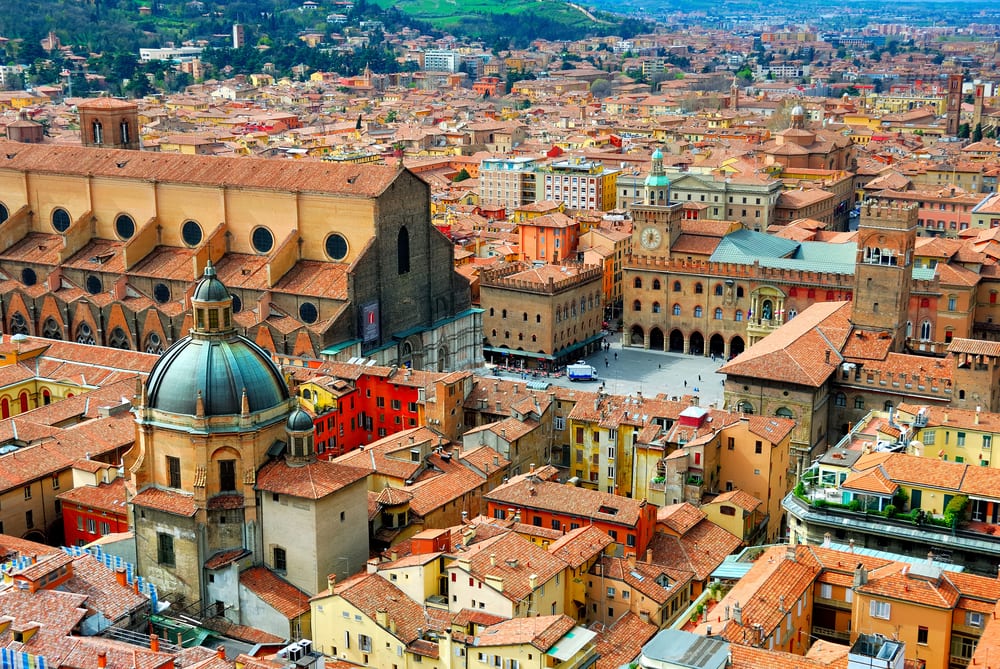
Beautiful Bologna
Bologna is the capital of Emilia-Romagna, one of our favorite regions in Italy. Bologna is also utterly beautiful. And there’s a ton to do here. From soaking in the academic ambience –Bologna is home to Europe’s oldest university–, to enjoying the region’s excellent cuisine in local trattorie, to taking fun pictures with the leaning tower of Bologna –it’s not just in Pisa!–, there’s something in this buzzing city for everyone.
Roma

Rome: One of the most beautiful cities… in the world
Rome is the largest city in Italy and with its 2,500 years of history and innumerable archaeological sites, art museums, churches, and ruins, it might just be the most fascinating! Despite Rome’s relatively compact –and beautiful!– historic center, you could easily spend a month exploring the city and not see everything. And, yes, there are a lot of places to see in Italy.
Naples and the Amalfi Coast
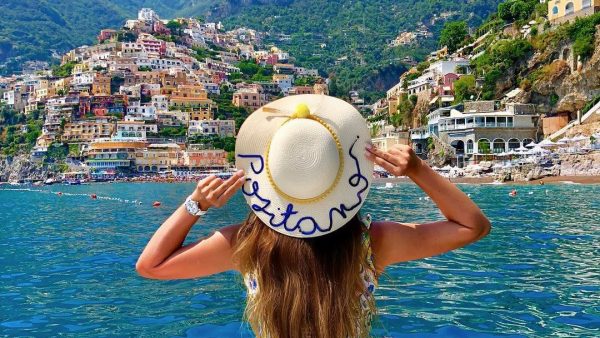
Naples and the Amalfi Coast, overlooked by Mt. Vesuvius
Naples often gets a bad rap – and, yes, the city is a little “grittier,” and much more chaotic, than Italy’s other cities. But there’s a reason why people call it Bella Napoli. There’s something about the decay of Naples’ elegant palaces and medieval castles that’s both bittersweet and beautiful. And there is a ton to do and see here, from enjoying the city’s world-famous food to exploring its eerie underground to seeing some of the most important art and archaeology in Italy at Naples’ top-notch museums. The energy here, though, is the true core of Naples’ bellezza—and something everyone has to experience at least once in a lifetime.
Florence

Florence is beautiful year-round!
Visit Florence once, and you’ll see why it inspired so many artists and writers! With its graceful buildings, cobblestoned streets, and showstoppers like the Duomo and Palazzo Vecchio, Florence is a feast for the eyes. And that’s just if you’re walking around outside! Inside those buildings, even more beauty awaits, from Michelangelo’s David in the Accademia to masterpieces by Leonardo da Vinci, Raphael, Titian, Caravaggio, and more in the Uffizi.
Lecce

The cathedral of Lecce is a must-see. The Piazza del Duomo is one of Italy’s most beautiful squares, a Baroque masterpiece that makes the space seem like a lovely cloister.
With about 100,000 residents, Lecce is one of the biggest cities in the region of Puglia. It’s also one of the prettiest! With its ornate, Baroque architecture, Lecce couldn’t look more different than Florence or Venice or Bologna. And exploring the city yields one interesting sight after another, like a 16th-century castle, one of the most important churches in Italy, and an ancient Roman amphitheater—just to name a few. If you’re considering a trip to southern Italy check out our pictorial guide to Puglia for inspiration.
Alberobello and Apulia
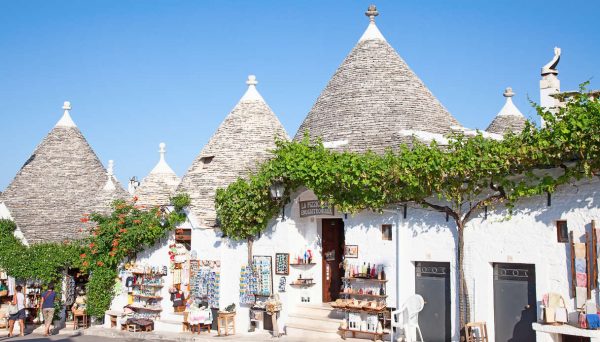
Alberobello, in the region of Apulia in southern Italy, is a strange and picturesque destination which is becoming an important fixture on the travel itineraries of tour operators as well as independent travellers. The small town has been made a UNESCO World Heritage site for its unusual districts of trulli, the characteristic white-washed conical-roofed houses of the area. It makes an interesting day-trip destination or a pleasant base for a few days – especially if you stay in a trullo of your very own.
Cinque Terre
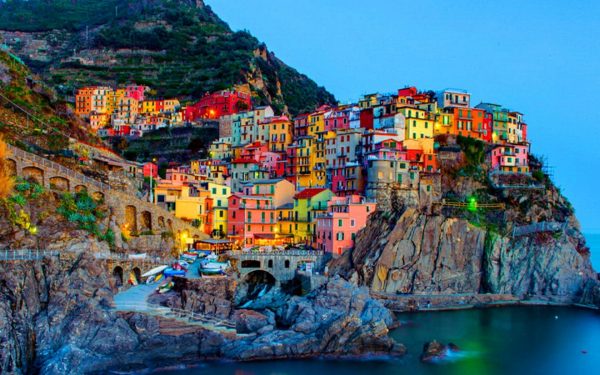 Cinque Terre is the name of a district that encompasses five glorious towns, where small houses are surrounded by lush nature. Visitors to this district will be fascinated by the beauty of these five small villages, namely: Manarola, Riomaggiore, Corniglia, Vernazza and Monterosso al Mare.
Cinque Terre is the name of a district that encompasses five glorious towns, where small houses are surrounded by lush nature. Visitors to this district will be fascinated by the beauty of these five small villages, namely: Manarola, Riomaggiore, Corniglia, Vernazza and Monterosso al Mare.The inhabitants of Cinque Terre benefite not only from its pristine waters, but from its natural environment, where wild nature is interspersed with vineyards, olive groves and citrus orchards, creating a precious bond between man, his traditions and this breathtaking stretch of coast.
Sicily
 The last but not the least because Sicily is not just a town … is a region and the entire region need to be enphasized.
The last but not the least because Sicily is not just a town … is a region and the entire region need to be enphasized.
Aeolian Islands:
These delightful islands are especially appealing in warmer months, but expect crowds in August. In winter ferry service (from Milazzo on the Sicilian coast) is sometimes cancelled for a few days due to bad weather. Otherwise, the beaches are exceptional and the cuisine fantastic – especially, as you would expect, the seafood.
Agrigento:
“Valley of the Temples” is a large archeological site outside town surrounded by olive groves and almond orchards. Agrigento boasts several ancient Greek temples, including the Temple of Concord, one of only two completely standing ones in Sicily. The other is at Segesta (mentioned below), and if time is very limited we suggest visiting either Agrigento or Segesta.
Cefalù:
The town itself offers pleasant narrow medieval streets and interesting shops. There’s also a public beach. And all just an hour from Palermo, making Cefalù a great excursion idea if you’re staying in the capital.
Erice:
This hilltop town was successively Elymian, Phoenician, Carthaginian and Roman. Its grey stone forms Punic walls, a castle, church and medieval streets that could almost be mistaken for ancient ones, bringing to the Good Friday passion procession an atmosphere rarely matched anyplace in Italy or Greece. But there’s much more to Erice than this singular annual event. While you’re here, don’t forget to try the local pastries.
Mount Etna:
Europe’s greatest natural wonder is a living, sacred mountain of legend and myth. Consider a jeep excursion to the upper regions, which are covered with snow for four months of the year. Dress warmly in summer too; it’s always cool at the top. (In the classic scene shown here Etna is viewed from the Greek amphitheatre at Taormina.) This is Sicily’s highest mountain at approximately 3350 meters.
Monreale:
Fascinating cathedral and cloister built on a hill in the eclectic Norman-Arab style with Byzantine artistic elements. No trip to Palermo is really complete without seeing Monreale, which overlooks the city and its vast valley.
Nebrodi Mountains:
Nebrodi Mountains are the most lushly forested region of Sicily. Situated to the immediate north of Etna, the range boasts some of the island’s highest peaks after the volcano itself (though several in the Madonie Mountains to the west exceed them). The unique Nebrodian appeal is its complete departure from any common stereotype of “Mediterranean” landscapes and the visitor’s consequent realisation that much of Sicily looked this way when the first Phoenicians, Ausonians and Greeks arrived over two thousand years ago.
Palermo:
Sicily’s regional capital and largest city is perhaps best compared to a rough, uncut jewel. Its beauty has to be revealed through careful discovery. The historic environment of this former royal capital of kings and emirs is largely Baroque with some stunning nuggets of medieval architecture. The Norman Palace, with its Byzantine Palatine Chapel (a Monreale in miniature), is built upon Phoenician walls. There are a number of monasteries and castles, and a magnificent cathedral, as well as art galleries and a good archeological museum.
Piazza Armerina:
Roman villa outside town has the most extensive mosaic pavements of the ancient Roman world, composed of rural scenes, pictures of flora and fauna, and classical motifs. Most of it is in exceptional condition, looking as if it were completed yesterday. The structure was the home of a wealthy Roman who loved art.
Segesta:
We mentioned that Agrigento has one of Sicily’s two completely standing Greek temples. The other is at Segesta. Out of justified pride, a few of today’s Greeks might disagree, but this is the best-preserved ancient Doric temple in what used to be the Greek world. The site’s ancient amphitheatre, set on a hill, boasts a magnificent position. If time is very limited, we suggest that you visit either Segesta or Agrigento.
Siracusa:
Archimedes, Plato and Saint Paul loved Syracuse, and with good reason. It was one of the most important cities of the ancient Greek world, and the most important in Greek and Roman Sicily. It was also one of the most beautiful. The archeological park is extensive, while the old city, Ortygia, with its charming, narrow streets (closed to most traffic), boasts some fascinating treasures. The cathedral was the ancient Temple of Athena, whose columns and walls are still visible throughout the church. Carved into a limestone hypogeum, Europe’s oldest mikveh is a special piece of Judaic heritage not to be missed, and you can even stay in the Hotel alla Giudecca above it. Among the cognoscenti, Siracusa has developed a reputation as a kind of “intellectual” alternative to tourist-filled Taormina. For ambience as well as cuisine, La Foglia, at Via Capodieci 29, is an exceptional restaurant in town, not at all “touristy.” If your cultural or architectural taste runs to something more Baroque, consider Ragusa, Modica and Noto to the south.
Taormina:
Amazing mountaintop town overlooking the Ionian coast is Sicily’s most famous resort, full of restaurants and shops, with beaches nearby. Its historical side is ubiquitous. The Greek amphitheatre, with its famous panoramic view of Mount Etna and the coast, is used for concerts and plays, and medieval walls enclose the old town’s stone streets (many closed to traffic). There are several castles, including those in the Castelmola overlooking Taormina. Ignored by most visitors, Castelmola is well worth a visit.
Wine Country:
Sicily’s viticultural region covers a large patch of the western part of the island. Marsala is the commercial center of this scenic region. You can sample Sicilian wines at virtually any restaurant in Sicily, but actually finding the most scenic viticultural landscape can be elusive. Here’s a clue. Along this “secret” route you’ll find little traffic but an endless series of gently rolling hills carpeted with vineyards as far as the eye can see. It’s a magical place that rivals any grape-growing region in the world in its serene magnificence. It also has what is in some ways a more distinguished history. That’s because domesticated grapes were cultivated here long before they were introduced into France or northern Italy. If you come from Palermo, Segesta is a convenient stop.
Baroque Southeast:
The towns of Ragusa, Modica, Scicli and Noto , with their palaces and churches in the Sicilian Baroque style, are something truly representative of 18th-century Sicilian architecture and art. The landscapes of the Hyblaean Mountains, and even some of the architecture of these towns.Vendicari Nature Reserve, as well as Cavagrande, Pantalica Necropolis and the Anapo Valley, are an easy driving distance from both cities.
Contact us to customize your tour of Italy and Sicily

In conclusions let me thank you for the time you have spent to read this long page and hope you have appreciated the topic, as well as the conteints.
Regards, Valy